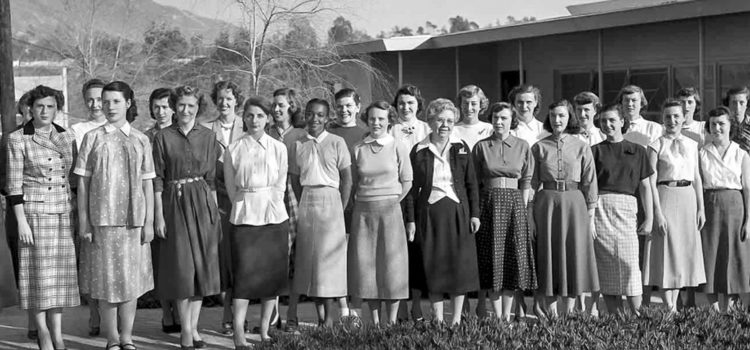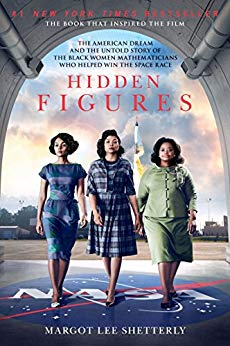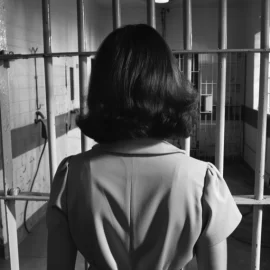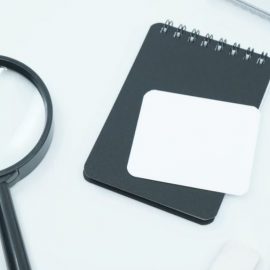

This article is an excerpt from the Shortform summary of "Hidden Figures" by Margot Lee Shetterly. Shortform has the world's best summaries of books you should be reading.
Like this article? Sign up for a free trial here .
Who is Dorothy Vaughan in Hidden Figures? How did Dorothy Vaughan, NASA West Computer and later manager, ascend the ranks and contribute to science?
Dorothy Vaughan was one of the first black women to join NACA (later NASA). She was a pioneer of her time and was instrumental in jumpstarting the careers of other legendary women of NASA, including Mary Jackson and Katherine Johnson.
Read how Dorothy Vaughan, NASA legend, carved out new opportunities for black women in science and rose through the ranks of one of the world’s most prestigious organizations.
Dorothy Vaughan’s NASA Opportunity
Dorothy Vaughan’s NASA career started at Langley during World War II. Women had been working as computers (note: computer refers to a person who does mathematical computing) who does at Langley during the 1930s, but they would take on a far greater role at the laboratory during and after the war. By 1941, personnel officers at the lab were eagerly searching for more and more women (or “girls” as they were called at the time) to fill the new positions at Langley. Hiring agents scoured the East Coast for coeds who had any sort of mathematical background and placed job advertisements in newspapers in their endless quest for new talent.
At the same time, African-American leaders like A. Philip Randolph, head of the largest black labor union in the country, were pressuring the Roosevelt Administration to open up coveted jobs in the defense industry to black applicants. This was what enabled black women to submit their applications to work at Langley—it was just a crack, but the door to opportunity was slowly starting to open.
So who is Dorothy Vaughan? In spring 1943, Dorothy Vaughan, a schoolteacher from Virginia, filled out her application to work at Langley Memorial Aeronautical Laboratory. In the fall, she received her answer: she was hired to work as a Grade P-1 Mathematician at Langley for the duration of World War II. It was a position that would last over 30 years. Dorothy Vaughan’s Hidden Figures role shows her as an advocate for others, and an essential part of the NASA team.
How Vaughan Got the NASA Job
As a college graduate and high school teacher, she had reached the pinnacle of what was thought possible for black women at that time. Still, the inequality was inescapable—Virginia’s black teachers earned less than 50 percent of what their white counterparts did and worked in segregated, poorly funded, and dilapidated school buildings. But she was a passionate believer in education, believing that it was the best chance black children had to succeed in a country that forced them to work twice as hard to get half as far as white people. She poured herself into her work and was a passionate advocate for her students, even under the trying circumstances of Virginia’s segregated public schools. She even once sent a letter to a math textbook publisher when she discovered an error in one of their books, demanding that they correct it.
She had received her degree in education from Howard University, one of the nation’s premier black colleges. Because the white schools (including the Ivy League) refused to tenure black professors regardless of their brilliance, black schools like Howard had an over-abundance of extraordinary scholars. Dorothy had the opportunity to study under some of the nation’s greatest minds. Although she studied education in order to become a teacher (considered at the time to be the most stable possible career for a black woman) she had always had a passion for mathematics.
She was hired to work as a Grade P-1 Mathematician at Langley for the duration of the war. Her pay would be more than twice what she was earning as a high school teacher. Although the job would take her away from her husband, her children, and the community that she loved (they would only be able to see her during school breaks and scheduled visits), she knew she could not let this opportunity pass her by. Dorothy Vaughan, NASA employee, was on its way to becoming real.
Dorothy Vaughan’s Career After the War
What did Dorothy Vaughan do? The research and innovation coming from Langley played a major role in the ultimate Allied victory in World War Two, which finally came when Japan surrendered on August 15, 1945. Although few Americans knew it, a small contingent of black female computers had made vital contributions to the superior aircraft production that had enabled the Allies to defeat Nazi Germany and Imperial Japan.
But while the end of the war ushered in a nationwide wave of euphoria, it was a source of anxiety for Langley computers like Dorothy Vaughan, NASA computer. Their contracts had only guaranteed employment for the duration of the war. Now that the war was over, what lay ahead for the black computers of Langley? Would the extraordinary opportunity they’d been given be taken away?
Pioneers like Dorothy weren’t about to let their gains be taken away without a fight. They had established new lives and careers during the war, and they intended to consolidate and expand on the progress they had made. They could not and would not be sent packing to their former lives.
While much of the nation did, in fact, witness a downscaling of the defense industry, this was not the case in Hampton Roads. As the Cold War with the Soviet Union began to take shape following World War Two, Southern Virginia was set to become a critical hub of the nation’s defense industry.
Thus, although some women who had been hired during the war did end up leaving Langley, this was usually due to personal choice rather than being forced out of their positions. Most of the West Computers ended up receiving permanent offers of employment, as Dorothy did in 1946, when she was made a permanent Civil Service employee.
Dorothy Vaughan rapidly ascended the ranks at Langley. What did Dorothy Vaughan do as her position and responsibility grew? As more and more women were hired at the now-integrated West Computing to replace those who had been reassigned to specialized divisions, she transitioned into a managerial role. In 1949, the laboratory director appointed her head of West Computing, a position she would hold for the next decade. Dorothy Vaughan, NASA computer, had broken through barriers and secured a managerial job.
Advocating for Others and the End of West Computing
Dorothy Vaughan, NASA manager, was a tireless advocate for the computers who worked under her. After hearing how well Katherine was performing in the Flight Research Division, she presented the head of the division with an ultimatum: either give Katherine the raise and permanent position in the division she deserved, or return her to West Computing. The division chief, the formidable and intimidating Henry Pearson, acceded to Dorothy’s pressure: Katherine was given a salary increase and a permanent job in his Maneuver Loads Branch in 1953.
The expanded mission and scope of NASA wrought major changes for the agency, transforming it into a high-profile bureaucracy with twice as many employees as it had before. It also signaled the end of an era for West Computing. Skill specialization was now the key to success at NASA: there was simply less of a need for a centralized pool like West Computing. Many of the original West Computers had already moved out of the pool, being assigned to mission-focused projects and divisions elsewhere at the laboratory. By the time NASA shuttered the West Area Computers Unit in 1958, only nine remained, including Dorothy Vaughan.
The end of the unit represented the end of an era, the disbanding of a band of sisters who had made great strides in smashing the color barrier in the United States. For the rest of their lives, the former West Computers would remember their experiences and tell their stories with the quiet dignity that was so characteristic of women of this generation. They didn’t see themselves as heroes—they were simply doing their jobs. In this way, the answer to the question “what did Dorothy Vaughan do” is simple. She did her job, and opened doors for others along the way.
In subsequent years, Dorothy would reinvent herself as an early computer programmer, mastering the IBM 704. She performed the vital task of translating engineers’ data and entering it into the computer in its FORTRAN language. Dorothy’s work at Langley had helped her fulfill many of her ambitions. Her children were off to college, and she had bought a home of her own. And she had shepherded so many of her “girls” onto fulfilling careers of their own. But this was a bittersweet moment for Dorothy. As she passed the torch to a new generation of black women, she also recognized that she would be taking a back seat. Her days as a manager were over. For Dorothy Vaughan at NASA, she would be just one of the girls again.
For Dorothy Vaughan, NASA was a dream come true. A chance to contribute to the war turned into her career, and enabled her to make scientific contributions while helping other black women succeed. Dorothy Vaughan’s Hidden Figures role was invaluable to her country.

———End of Preview———
Like what you just read? Read the rest of the world's best summary of Margot Lee Shetterly's "Hidden Figures" at Shortform .
Here's what you'll find in our full Hidden Figures summary :
- How brave black women were instrumental to the American space race
- How they confronted racism and sexism to forge a better future
- Their enduring legacy in American history






